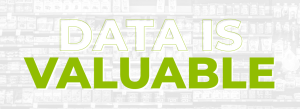Five Ways in Which Brand Data can Boost your Merchandising Operations
Data is critical for strategy development in any sector. Marketing is no different; using data to inform your merchandising activities plays a key role in improving your business.

Businesses collect data for many purposes. Mainly, finding out about customers is used to power better customer experience and marketing strategies, discover new markets, dig into buying habits, and many other things. However, in-store data is only sometimes so easy to collect. That is because to do it, the company has to send field teams to physical stores, which can be both timely and costly.
The difficulty in gathering in-store data on products and customers has hurt retail, as many brands tend to lack this information. However, as merchandising data is considered to be such a valuable tool for brands to analyze and shape their retail environment, here are the main ways in which brand data can boost your merchandising operations:

1. Use data to choose the right displays and where to place them
Brand data helps create display hierarchies, also known as Consumer Decision Trees. A consumer decision tree is a graphical record that retailers can use to identify and understand consumer buying habits and any decision-making process any individual follows when shopping in a particular category.
Once you have established a display hierarchy, brand data is helpful for allocating space based on contribution; giving the right amount of space to your products on the shelf is crucial for boosting sales and generating a better customer experience.
Additionally, brand data helps you identify the correct products to arrange in displays, as they will encourage impulse purchases. Displays increase visibility and attract shoppers' attention. They also contribute to creating brand awareness and showing new product launches.
2. Keep track of pricing and planogram changes
There are so many changes that can happen in-store in a single day. Understandably, gaining control over them can take time and effort. Keeping an eye on any issues affecting your sales is crucial. For example, tracking pricing and planogram changes in convenience stores is tricky and essential. Why? Because it is easier to have control over larger stores than independent ones. Most likely, some of the latter have not agreed on pricing with you.
Keeping track of how your products are priced in these channels will help your brand maintain consistency.
3. Make sure the stores are compliant with promotions
Gathering quality merchandising data can help your business track which stores are running promotions as agreed with the company. Of course, if you invest heavily in promotions, the least expected is promotional compliance. That is why brand data helps your business ensure that your plan is executed well and better understand the impact of promotions on your sell-out.
By gathering this kind of data, you can identify and address issues in this regard, thus taking action whenever stores need to comply with agreements.

4. Improve customer experience
Customer experience is a pillar of any successful business, and, as a brand, it is essential to monitor it regularly. This is crucial to understanding how your product is sold in any store, including the most scattered ones across the territory. How are stores' staff promoting and recommending your product? How often are they doing it, and why? Brand data allows your business to ensure that your products are being sold as expected, get feedback on improving customer service, and monitor and measure service performance.
5. Avoid out-of-stock situations
For a good reason, avoiding out-of-stock is on the top list for retailers and brands. Products out of stock lead to lost sales and decrease the quality of customer experience, lowering conversion rates. Therefore, getting data on product availability is crucial to ensure your business gets excellent ROI.
Take advantage of the opportunity to gather data from thousands of stores across Australia!
SmartSpotter can gather real-time data from all the checkpoints you need across Australia. Our crowdsourcing system provides neatly packaged real-time, automated, and shareable analytics that empower the brand and retailer to take effective action!
